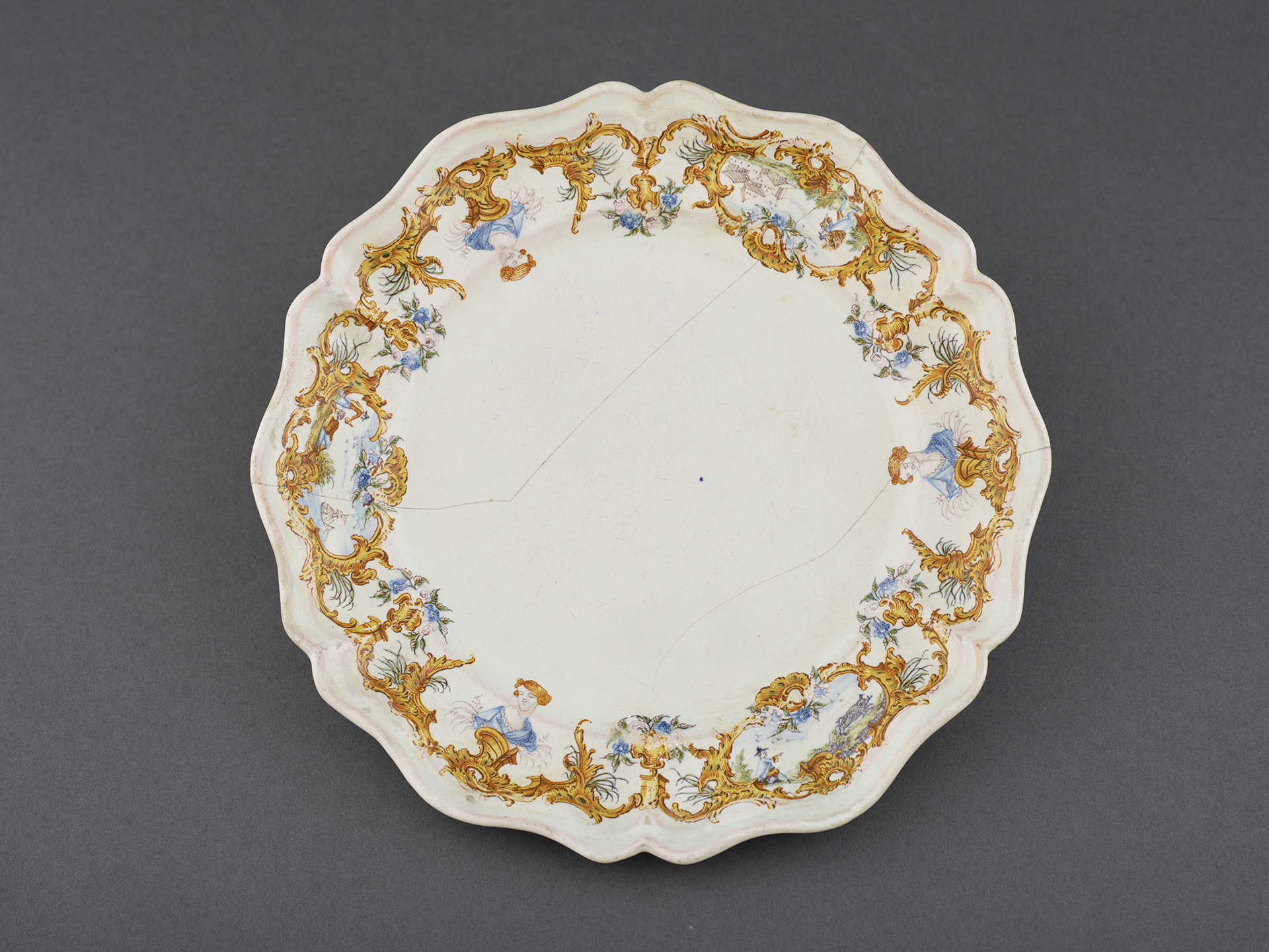
Manufactura de Alcora
Plate
"Madamita" [little lady] series (1760-1770)
WORK INFORMATION
Ceramic, polychrome earthenware, diam. 24.5 cm
The Alcora manufactory was founded in 1727 by the 9th Count of Aranda on land he owned in what is now the province of Castellón. The aim was to create a luxury earthenware and porcelain factory that would compete with foreign manufactories. Royal privileges, including tax exemption on the export of pieces and the free entry of materials from abroad, allowed this manufactory to operate until the middle of the 19th century despite the fact that it barely made any profits.
Throughout its existence, the factory became a model of organisation and a point of reference in terms of aesthetics thanks to the recruitment of foreign specialists, artists and “secretists” who claimed to know the secret of porcelain manufacture. In addition, the creation of an apprentice academy enabled the manufactory to continue to provide top quality production.
This plate with a lobed rim belongs to the establishment’s second period (1749-1786), which began when Pedro Pablo, son of the 9th Count of Aranda, inherited the factory. The 10th Count was the Spanish ambassador in Paris and was in contact with the Encyclopaedists. His curiosity led him to search for the formula for porcelain, but he only managed to obtain a material that was similar to French soft paste and English pipe clay.
Stylistically, the plate has a rocaille border that occupies the entire brim. Its arrangement is asymmetrical and is made up of whimsical curved and counter-curved forms tracing three medallions filled with landscapes and figures, alternating with six flowering jars and three female busts. These are the characteristic elements of the “little lady” series described by Mamés Lalana, manager of the Alcora manufactory from 1766. In 1775 he wrote a memorial detailing the models introduced in the factory from 1764: “[...] said ‘little lady’ [model] with its flowers and well-made leaves”. The theme of the “little lady” was quite important in the Bérain series of the first Alcora period, in which the figure was reproduced with a drawing of academic perfection and always in blue. The “little lady” of the second period displays a less careful and rigorous design that fits in with the more popular trend prevailing in the second half of the 18th century.

